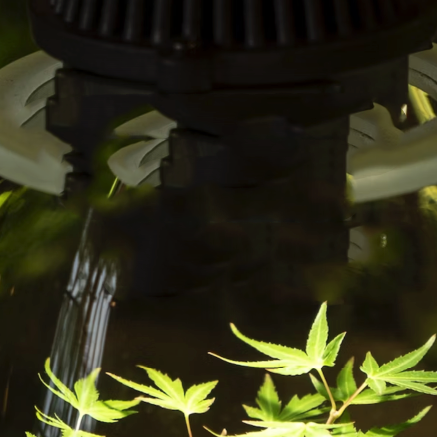LED grow lighting has really come of age in the last couple of years, and most growers have made the switch from legacy HID to next-gen lighting systems. That's because LEDs are brighter, more efficient and feature spectrums that are closer to natural sunlight. It’s worth bearing in mind, though, that the extremely high efficiency levels of LEDs (up to an astonishing 2.9 umols per watt) come with a downside. When lighting runs more efficiently, less energy is lost as heat. During the summer, the excess heat produced by HPS lighting systems is a massive hindrance, but in winter it can be a big help. In this blog, we'll talk you through some of the ways to get around this issue and get the best out of your LEDs during the colder months.
Add an Extra Heat Source
This an obvious solution to the problem! Oil filled radiators provide the best bang for buck because they're so economical on power. Tube heaters are useful because they can be placed between plants. Your extraction system will then pull the heat up through the canopy (where it's needed). Fan heaters use more power, but they're more heavy-duty and will heat the room up more quickly. If you want to get the best out of your grow room heaters, then we'd always recommend powering them from a thermostat, which will switch them on and off as needed, keeping your conditions optimal.
Use Supplementary Lighting
Consider adding in some high intensity discharge lighting, like HPS and CDM. This will boost light and heat levels at the same time. If you don't have the spare room, consider switching out one of your LED lighting fixtures until outside temps start to rise again.
Use a Fan Speed Controller
Your extraction system will help to control your grow room environment no matter what time of year it is by automatically adjusting output speeds according to room temperatures. As temps drop, airflow rates are reduced to compensate. This will solve issues with cold temps, but it comes at a price (more below).
Run a Dehumidifer
Lower room temps reduce the air's capacity to hold water, increasing relative humidity levels. The reduced airflow rates needed to prevent temperature drops can make the matter even worse by reducing your ability to remove moisture from the room at the same time.
Maintaining the right humidity level is crucial to getting decent results. Should conditions become too moist, transpiration rates will slow down, reducing the capacity for plants to uptake liquid. At the same time, high humidity levels leave the door open for powdery mildew and rot: two big problems that can destroy entire crops. ORA's new dehumidifier is a heavy-duty, industrial grade piece of kit that's designed to tackle the issue head-on.
It pulls up to 2.5 litres of water from the air per hour, equivalent to 60 litres per day. It's easy to use, with a simple digital display; just choose your ideal humidity and fan setting.
The storage tank holds six litres of water, which won't last long with this unit's level of drying power, so there's a 13mm barbed straight piece on the side to connect to. You can use the supplied three metre length of pipe to go from this straight piece to your reservoir and put the water to use feeding your plants.
Because it's built for industrial use, it's not the lightest unit ever. But the wheels that are mounted on the underside take the strain out of moving it around your grow space, and the carrying handles make it easy to transport.
It can cover a 60 cubic metre area, but bear in mind that these numbers will change if you're running extraction. You'll naturally get the best performance in closed-loop rooms, but these units are still useful for growers running extractor fans, especially during night-time periods when fan outputs are at their lowest.
